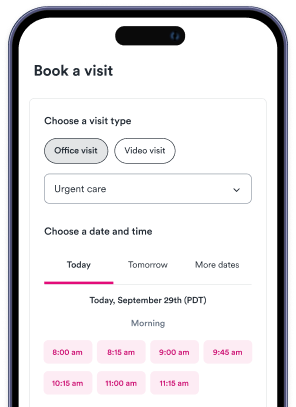Key points
- The flu is a contagious respiratory illness that can cause mild to severe symptoms, and it primarily spreads through airborne droplets and surface contact.
- Flu symptoms typically appear within one to four days after exposure to the virus and can last up to two weeks, with distinct phases of illness.
- Individuals with the flu are contagious starting one day before symptoms appear and can remain so for up to five to seven days after becoming sick.
- Flu prevention involves getting an annual vaccination, practicing good hygiene, avoiding close contact with sick individuals, maintaining a healthy immune system, and regularly disinfecting high-touch surfaces.

Influenza, commonly known as the flu, is a contagious respiratory illness caused by influenza viruses that infect the nose, throat, and sometimes the lungs. It can lead to mild to severe illness and, in some cases, even result in hospitalization or death.
Understanding how long the flu can last is crucial for managing health and daily routines, as the illness can significantly impact productivity, social interactions, and overall well-being. Knowing the typical duration of flu symptoms, effective treatment options, and preventive measures can empower individuals to make informed decisions and minimize the virus's spread, ensuring a healthier community during flu season.
What is the flu and how does it spread?
The flu, or influenza virus, is a contagious respiratory illness that affects the nose, throat, and lungs, leading to symptoms such as fever, cough, and body aches. It primarily spreads through airborne droplets when an infected person coughs or sneezes and through surface contact with contaminated objects, followed by touching the face, according to the CDC. Direct contact with an infected individual can also facilitate transmission. In the U.S., the flu season typically peaks between late fall and early spring, with most cases occurring from October to March.
Flu symptoms and duration
Flu symptoms can vary in intensity and typically appear suddenly, often within one to four days after exposure to the virus, according to the CDC. While most people recover within a week or two, some may experience lingering effects. Recognizing the common symptoms is essential for early diagnosis and management.
Common flu symptoms include:
- Fever
- Chills
- Cough
- Sore throat
- Muscle aches
- Fatigue
- Headache
- Nasal congestion
The timeline of flu symptoms typically unfolds over a span of about one to two weeks, with distinct phases of illness. During the first three days, individuals often experience a sudden onset of symptoms, which can escalate in intensity, according to the CDC.
Symptoms generally peak by days four to six, and complications such as pneumonia may arise, particularly in vulnerable populations. Most healthy individuals start to recover by days seven to ten; however, some symptoms, such as persistent cough and fatigue, can linger for up to two weeks, prolonging the overall recovery experience.
Timeline of flu symptoms:
- Days 1–3: Sudden onset of symptoms
- Days 4–6: Peak symptoms, possible complications
- Days 7–10: Recovery for most healthy individuals
How long are you contagious with the flu?
Those infected with the flu are typically contagious starting about one day before symptoms appear and can remain so for up to five to seven days after becoming sick. This means that a person can unknowingly spread the virus to others even before they start feeling unwell, according to the CDC. Young children and those with weakened immune systems may be contagious for a longer duration, sometimes extending beyond the typical timeframe. Understanding this contagious period is crucial for preventing the spread of the flu, especially in communal settings such as schools and workplaces.
How to treat the flu at home
Treating the flu at home primarily involves supportive care aimed at alleviating symptoms and promoting recovery, according to the CDC. Key components of this care include getting plenty of rest, staying well-hydrated, and using over-the-counter (OTC) medications such as acetaminophen or ibuprofen to reduce fever and relieve body aches.
Decongestants can also help ease nasal congestion. In some cases, healthcare providers may prescribe antiviral medications, which can help shorten the duration of the illness if taken early in the course of the infection. It is important to monitor symptoms closely, especially for signs of dehydration, such as decreased urination or dizziness, and to ensure adequate fluid intake through water, broth, or electrolyte solutions.
When to see a doctor or visit urgent care for the flu
While many cases of the flu can be managed at home, it's essential to recognize when to seek medical attention. Certain red flags and warning signs indicate that a visit to a doctor or urgent care may be necessary, according to the CDC. These include:
- Difficulty breathing
- Chest pain
- High fever that persists despite treatment
- Persistent dizziness or confusion
- Flu symptoms that initially improve but then worsen again
If you experience moderate symptoms or have concerns about potential complications, such as pneumonia, it’s advisable to seek medical care. Early intervention can help prevent more severe health issues and ensure appropriate treatment, according to the CDC.
How to prevent the flu
Preventing the flu involves a combination of strategies that can significantly reduce the risk of infection and the spread of the virus, according to the CDC:
- The most effective way to protect yourself is by getting an annual flu vaccination, which helps the body build immunity against circulating strains of the virus.
- Practicing good hygiene is also crucial; frequent hand washing with soap and water or using hand sanitizer can help eliminate germs.
- Avoiding close contact with individuals who are sick minimizes the chances of transmission.
- Maintaining a healthy immune system through a balanced diet rich in vitamins and minerals, along with adequate sleep, can enhance your body’s defenses.
Lastly, regularly disinfecting high-touch surfaces, such as doorknobs, light switches, and smartphones, can further reduce the likelihood of viral contamination in your environment.
Get treated for flu symptoms when you use Solv to find an urgent care near you
When you're experiencing flu symptoms, it's crucial to get the care you need right away. Use Solv to easily find an urgent care center near you and book same-day appointments.
FAQs
What is the flu and how does it spread?
The flu, also known as influenza, is a contagious respiratory illness caused by influenza viruses. It affects the nose, throat, and lungs, leading to symptoms such as fever, cough, and body aches. The flu primarily spreads through airborne droplets when an infected person coughs or sneezes and through surface contact with contaminated objects, followed by touching the face. Direct contact with an infected individual can also facilitate transmission.
How long does the flu typically last and when do symptoms appear?
Flu symptoms can vary in intensity and typically appear suddenly, often within one to four days after exposure to the virus. The timeline of flu symptoms typically unfolds over a span of about one to two weeks. During the first three days, individuals often experience a sudden onset of symptoms. Symptoms generally peak by days four to six, and most healthy individuals start to recover by days seven to ten. However, some symptoms, such as persistent cough and fatigue, can linger for up to two weeks.
When is a person with the flu contagious?
A person infected with the flu is typically contagious starting about one day before symptoms appear and can remain so for up to five to seven days after becoming sick. This means that a person can unknowingly spread the virus to others even before they start feeling unwell. Young children and those with weakened immune systems may be contagious for a longer duration.
How can the flu be treated at home?
Treating the flu at home primarily involves supportive care aimed at alleviating symptoms and promoting recovery. This includes getting plenty of rest, staying well-hydrated, and using over-the-counter medications such as acetaminophen or ibuprofen to reduce fever and relieve body aches. Decongestants can also help ease nasal congestion. In some cases, healthcare providers may prescribe antiviral medications, which can help shorten the duration of the illness if taken early in the course of the infection.
What are the preventive measures against the flu?
Preventing the flu involves a combination of strategies including getting an annual flu vaccination, practicing good hygiene such as frequent hand washing with soap and water or using hand sanitizer, avoiding close contact with individuals who are sick, maintaining a healthy immune system through a balanced diet rich in vitamins and minerals, along with adequate sleep, and regularly disinfecting high-touch surfaces, such as doorknobs, light switches, and smartphones.









